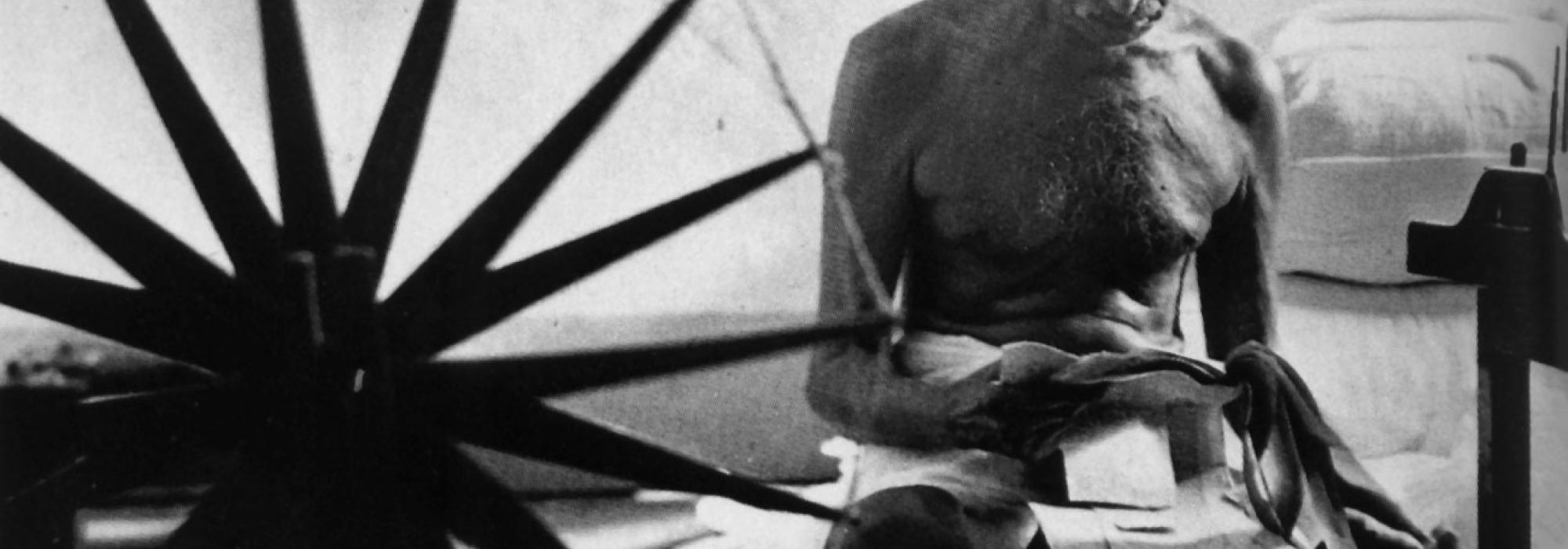Any discussion about Rama Rajya in the context of the previous century of India’s history will be incomplete without objectively examining the role of Mohandas Karamchand Gandhi. In the present context, this examination becomes more crucial for significant reasons.
Both Gandhi and DVG were contemporaries; the former was senior to DVG by eighteen years. Both contributed to the freedom struggle. While Gandhi was a freedom fighter in the commonly understood sense, DVG was a freedom fighter of a far profounder sort. It can be said that while Gandhi had his finger on the pulse of the proverbial masses, DVG had invisibly established himself in the heart of Bharatavarsha. DVG was able to accomplish far more without the sort of extensive and relentless travel that Gandhi undertook; this is an oblique reminder of the famous remark of Sarojini Naidu that “it costs a lot of money to keep Gandhi in poverty.” While Gandhi was moved by and mostly saw the paint that had faded on the body of Bharatavarsha, DVG had an unerring insight into and sought to reinvigorate the foundations she stood on.
In fact, the yawning contrast between the two can form the subject of an independent study in its own right.
Nowhere is this contrast more visible than in their respective understanding of the conception of Rama Rajya. In the interests of objectivity, we can cite the words of the legendary scholar-historian, R.C. Majumdar who has presented perhaps the most unbiased assessment[1] of Mohandas Gandhi’s role and legacy.
Gandhi combined in himself the dual role of a saint and an active politician… one’s attitude towards a saint or view of his personal conduct…is a matter of devotion and personal opinion.…But one’s judgement on the public career of a political leader rests upon certain…expectations of a norm and conduct to be followed by him. The former is based upon faith…while the latter requires logical reasoning untrammeled by any personal sentiment or belief. The historian has nothing to do with the first, and is concerned only with the second…Such history must begin by discounting the halo of semi-divinity—and also…of infallibility—which was cast around Gandhi…I have to…view his life and activities…from [an]…angle, namely as a politician…leading a great political organization…formed for a definite political object…to achieve India’s freedom from political bondage.
This contrast is also directly evident in a different manner. DVG holds the distinction of bringing Mohandas Gandhi to Bangalore for the first time apart from penning several laudatory writings on Gandhi the saint. Yet, in his characteristic and unwavering fidelity to truth, DVG also displayed the tremendous courage required to dispassionately critique[2] Gandhi the politician as we can glean from this passage.
Before Gandhi’s advent, there was an open atmosphere in public discourse… After Gandhiji took the stage, this culture of free and open disagreement and debates vanished. It was said that the political stand of the entire country should be one, and that Gandhiji’s frontal leadership should be unhindered. It was said that if Gandhiji spoke, the nation spoke. The reasoning offered was as follows: unless the nation adopted this unquestioning mentality, we would not get freedom from the British… from then onwards, People were prohibited from taking his name without the mandatory honorific of “Mahatma.” Gandhiji’s thought was the nation’s thought.
Courageous Critique of Gandhi
Another similar example of DVG’s critique of Gandhi that we can cite is the caustic rebuttal he wrote condemning Gandhi’s arrogant behavior in the aftermath of the British firing on freedom fighters in Vidurashwatha near Bangalore. Gandhi had used this mass-killing as the pretext to write a haughty letter to the Mysore Maharaja, Krishnaraja Wodeyar IV asking him to abolish the Mysore Princely State and establish a “responsible government” in its place, and that he would henceforth “monitor agitations in all the princely states of India.” In practice, Gandhi’s call translated into spreading the Congress party’s machinery deeper and wider by supplanting the Mysore Princely State. The events that transpired from the Vidurashwatha firing and culminating in the Patel-Mirza Pact[3] of 1938 show the manner in which Gandhi actively encouraged the Mysore unit of the Indian National Congress to foment continuous disturbances against the Maharaja Krishna Raja Wodeyar IV.
In his rebuttal, DVG termed Mohandas Gandhi’s reaction as hasty, unfortunate and irresponsible. DVG was among the very few men of his time who had seen the innate value of our Princely States in preserving and maintaining the core aspects, traditions, and unbroken social and cultural norms of Bharatiya civilization. More so with respect to Mysore which even the British had praised as a model state. Therefore, DVG viewed Gandhi’s reckless response as succumbing to mob fury under the excuse of his promise[4] that the “sacrifice at Vidurashwatha will not go in vain towards achieving freedom by peaceful means.” DVG further said that if this was the nature of and the method for getting “responsible government,” one would need to question the very definition of such a government, which sought to uproot time-honoured systems which were working smoothly and replace them with something untested in practice, based solely on sloganeering and noisy activism. In fact, the Vidurashwatha eventuality can be regarded as a representative microcosm of the dangers of Mohandas Gandhi’s “cult of non-violence,” in R.C. Majumdar’s memorable phraseology.
To be continued
Notes
- R.C. Majumdar: Preface: History of the Freedom Movement in India: Vol 3 (Firma K.L. Mukhopadhyay) Pp xv, xviii. Emphasis added.
- DV Gundappa: Vruttapatrike
- K. Veerathappa: “Dewan Mirza Ismail and Mysore Congress.” Proceedings of the Indian History Congress, vol. 40, 1979, pp. 653–661
- Vidurashwatha: Jallianwala Bagh of Karnataka. Retrieved from http://vifreeindia.com/history/











































